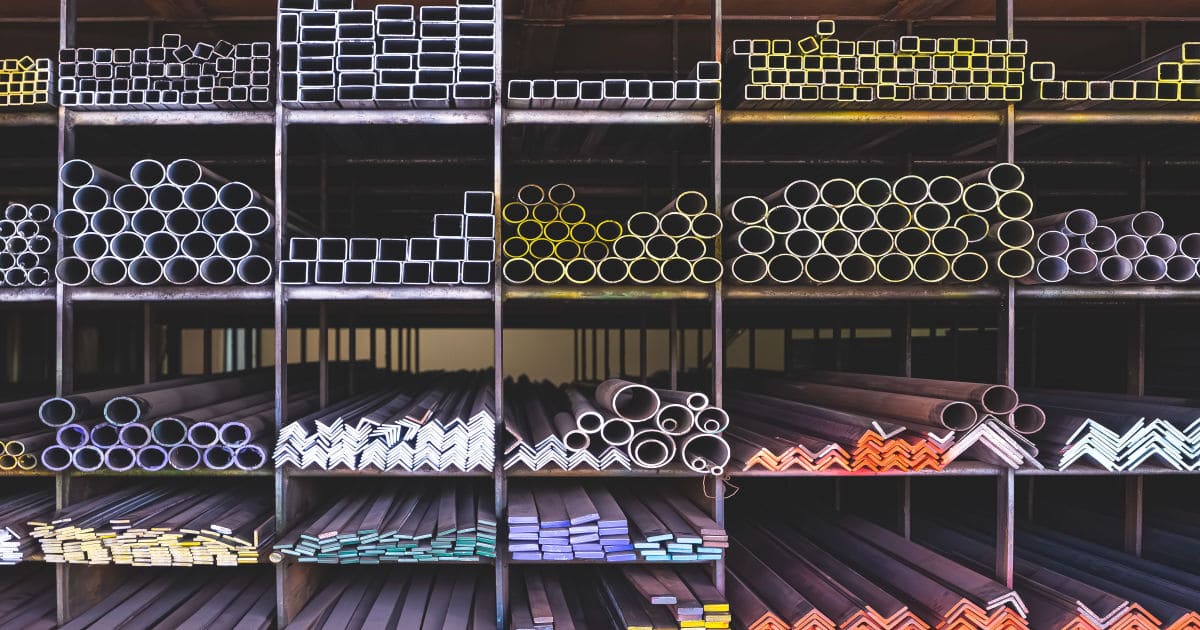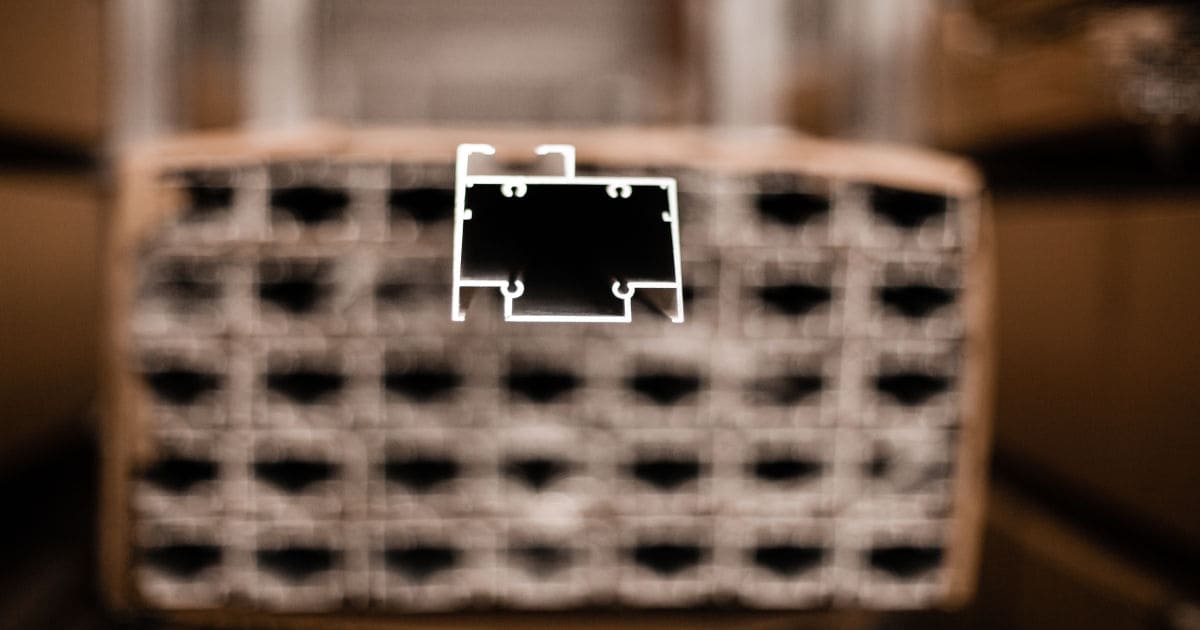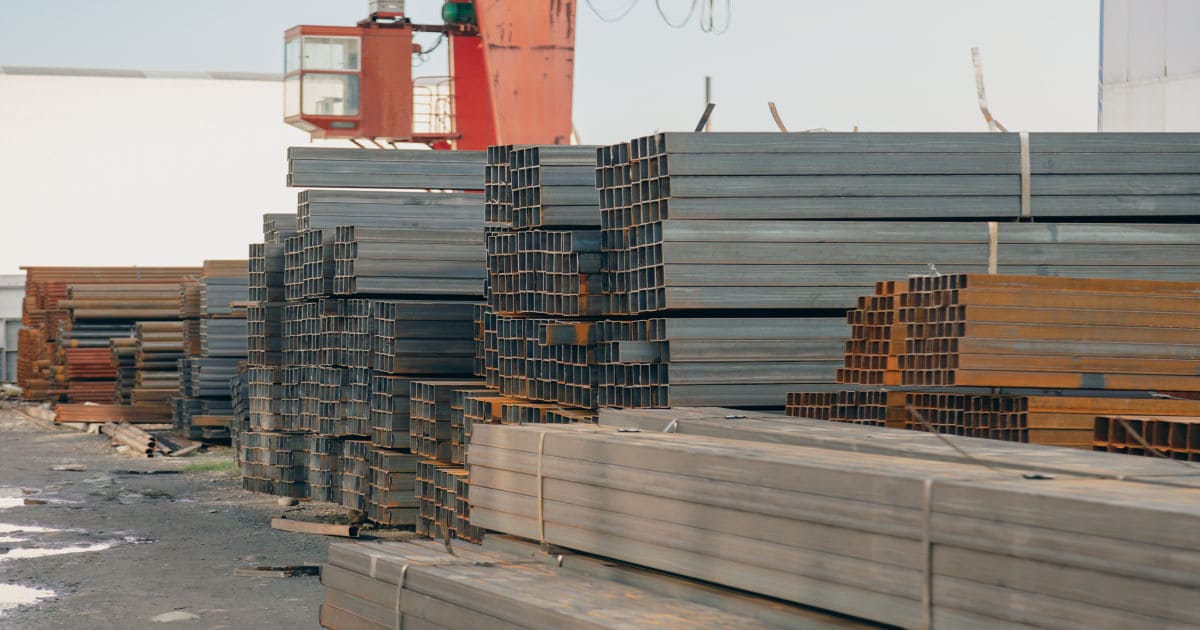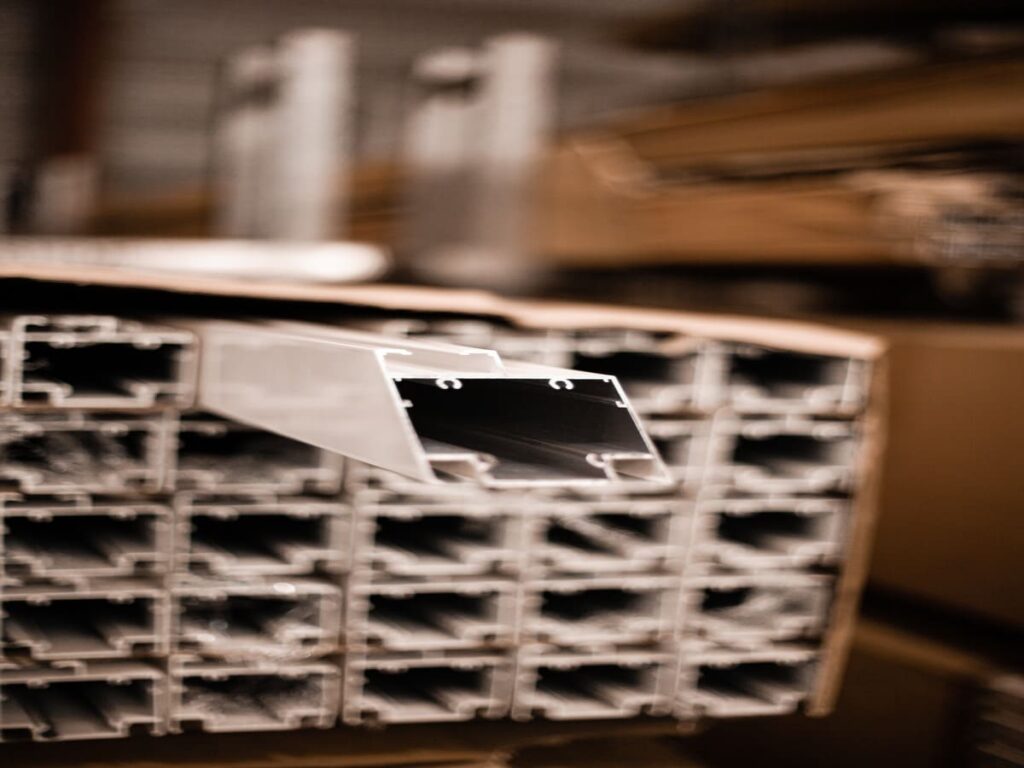Aluminum bars have captured the attention of industries worldwide due to their unique blend of properties. Aluminum has become a primary material in countless applications across different sectors. Engineers, architects, manufacturers, and designers value its ability to easily shape, machine, and extrude into various forms, including aluminum bars, making it a valuable resource. In the world of materials, aluminum stands as a testament to innovation and adaptability, offering a wide array of solutions to meet the demands of modern engineering and design challenges.
Within this dynamic landscape, aluminum bars play a big role. These bars, available in various shapes and alloys, find applications ranging from aerospace to construction, automotive to marine. The adaptability and the strength-to-weight ratio of aluminum bars make them indispensable components in developing lightweight structures and high-performance equipment. Evidently, their significance extends far beyond mere industrial components; they are the building blocks of modern innovation, enabling efficient, durable, and sustainable solutions across many sectors.
Types of Aluminum Bars
Round Bars
Round aluminum bars are cylindrical metal rods with a circular cross-section. Manufacturers usually extrude or cold-draw them, resulting in a uniform diameter throughout their length. People know these bars for their versatility and ease of machining, making them suitable for various applications.
Alloy Variations
6061 Aluminum: 6061 is a widely used alloy in round bars. It offers strength, and engineers favor it in applications where weight savings are necessary, such as aerospace components and structural parts in automotive manufacturing.
7075 Aluminum: This high-strength aluminum alloy is well-regarded for its exceptional tensile strength and toughness. It finds a wide use in aerospace applications that require strength and durability. Also, the automotive and marine industries utilize 7075 round bars for components that require robust performance.
Applications
Aerospace Industry: Round ones are very important components in aircraft construction. People use them in structural elements like fuselage frames and landing gear components because they are lightweight and corrosion-resistant.
Automotive Components: In the automotive sector, round bars are used in various applications, including suspension components, engine parts, and body structures. Their strength and reduced weight combination contribute to improved fuel efficiency and overall vehicle performance.
Marine Equipment: Aluminum’s resistance to corrosion makes it an ideal choice for marine equipment, and they are used to construct boat and ship components like masts, hull structures, and fittings. They withstand the harsh conditions of saltwater environments, enhancing the longevity of marine vessels and equipment.

Flat Bars
Flat aluminum bars, or flat stock or rectangular bars, are flat and elongated metal profiles with a uniform thickness and width. Manufacturers produce these bars through extrusion or rolling processes, giving them flat surfaces and right-angled edges. People appreciate flat aluminum bars for their ease of fabrication, including cutting, drilling, bending, and welding, which makes them versatile components in various applications.
Alloy Variations
3003 Aluminum: 3003 is a widely used alloy in flat bars due to its excellent corrosion resistance and formability. People often use it in architectural applications and building construction because its ease of machining and weldability offer advantages.
5052 Aluminum: 5052 is another alloy commonly used in flat bars. It offers good strength and corrosion resistance, making it suitable for electrical and architectural applications. It is often preferred for its high fatigue strength and workability.
Applications
Building Construction: Flat aluminum bars play a major role in building construction, where they are used for structural framing, window and door frames, curtain walls, and other architectural elements. Their corrosion resistance ensures the longevity and aesthetic appeal of buildings.
Electrical Conductors: Flat aluminum bars are employed in electrical applications, particularly manufacturing busbars and electrical conductors. Their excellent conductivity makes them ideal for efficiently transmitting electrical current while maintaining durability.
Architectural Detailing: Flat aluminum bars are utilized in architectural detailing to create decorative features, trim, and accents on buildings and interior spaces. Their malleability allows for intricate designs, adding a modern and sleek aesthetic to architectural projects.
Square Bars
Manufacturers produce square aluminum bars through various processes, such as extrusion and rolling. These bars have four-sided, solid metal profiles with equal width and thickness on each side, forming a square cross-section. People value them for their structural stability and versatility, making them suitable for various applications.
Alloy Variations
6063 Aluminum: 6063 is a commonly used alloy for square aluminum bars. It is known for its excellent extrudability, corrosion resistance, and relatively high strength. These properties make it a preferred choice for structural stability applications, such as structural framing and architectural components.
2024 Aluminum: While 2024 is often associated with round bars due to its high strength, it is also used in square bars. This alloy offers exceptional strength-to-weight ratio and fatigue resistance, making it suitable for manufacturing machinery components where durability is important.
Applications
Manufacturing Machinery: Square aluminum bars find applications in manufacturing machinery, especially for constructing frames, supports, and components that require structural integrity and a reduced overall weight. The lightweight nature of aluminum bars contributes to improved machinery performance.
Furniture Manufacturing: Square aluminum bars produce modern and lightweight furniture. They can be used for chair frames, table legs, and other structural components, adding a contemporary and durable touch to furniture designs.
Structural Framing: Square aluminum bars serve as essential components in structural framing systems, such as in the construction of greenhouse structures, shelving units, and exhibition booths. Their uniform cross-section and strength make them ideal for creating stable frameworks for various applications.

Hexagonal Bars
Hexagonal aluminum bars, often called hex bars, are solid metal profiles with a six-sided polygonal cross-section. Manufacturers extrude or cold-draw these bars, resulting in uniform sides and angles. Due to their geometric shape, hexagonal bars offer a unique combination of strength and versatility, making them suitable for various applications that need structural integrity and easy gripping.
Alloy Variations
2011 Aluminum: 2011 is a free-machining alloy often used in hexagonal aluminum bars. It provides excellent machinability, making it a preferred choice for applications like fasteners and bolts, where precise threading and shaping are crucial.
7075 Aluminum: 7075 hexagonal bars are used in applications demanding high strength and resistance to fatigue. This alloy is prevalent in aerospace components, where lightweight but robust materials are essential for aircraft and spacecraft construction.
Applications
Fasteners and Bolts: Hexagonal aluminum bars are commonly used in manufacturing fasteners and bolts due to their ease of machining and corrosion resistance. They offer a secure grip and utilize various industries, including automotive, construction, and machinery.
Aerospace Components: In the aerospace industry, hexagonal aluminum bars fabricate critical components such as engine mounts, landing gear parts, and structural elements. The high strength-to-weight ratio of 7075 aluminum ensures the safety and reliability of aerospace equipment.
Sports Equipment: Hexagonal aluminum bars find applications in sports equipment manufacturing, including bicycle components like handlebars, lightweight tennis racket frames, and other gear where strength, weight reduction, and ergonomic design are essential for performance improvement.
T-Shaped Bars
T-shaped aluminum bars, also known as T-bars, possess a cross-sectional shape resembling the letter “T.” They consist of a vertical section, the stem, and a horizontal section, the flange. Manufacturers produce T-bars through extrusion processes, creating a shape that offers structural stability and versatility. The stem of the T-bar can vary in width and thickness depending on the specific application.
Alloy Variations
6061 Aluminum: 6061 is a widely used alloy for T-shaped aluminum bars. It offers a balance of strength, corrosion resistance, and weldability. The versatility of 6061 makes it suitable for various applications, including architectural support beams and vehicle chassis.
6063 Aluminum: 6063 is another alloy commonly used for T-bars. People know it for its excellent extrudability and corrosion resistance. Architects favor this alloy in applications where they use T-bars for support beams and other structural elements.
Applications
Architectural Support Beams: T-shaped aluminum bars find extensive use in architectural applications, serving as support beams and structural elements in buildings and construction projects. Their combination of strength and aesthetics allows for open and spacious interior designs while ensuring structural integrity.
Vehicle Chassis: In the automotive industry, T-shaped aluminum bars are employed for vehicle chassis and frame construction. Their lightweight nature helps reduce overall vehicle weight, improving fuel efficiency and handling while maintaining structural strength and safety.
Heat Sinks: T-bars are utilized as heat sinks in electronic and thermal management applications. The horizontal flange of the T-bar provides a large surface area for efficient heat dissipation, making them essential components in electronic devices, LED lighting, and other heat-sensitive equipment.

Properties of Aluminum Bars
Lightweight and Ductile
People renowned aluminum bars for their remarkable lightweight characteristics, making them an ideal choice in applications that require weight reduction. Their low density, approximately one-third that of steel, helps minimize the overall weight of structures and products, contributing to fuel efficiency in transportation and ease of handling in various industries. Aluminum’s inherent flexibility also allows you to easily form and shape it, making it versatile for complex designs while retaining its structural integrity.
Corrosion Resistance
One of aluminum’s standout properties is its exceptional corrosion resistance. Aluminum forms an oxide layer. It prevents oxidation and degradation. This property makes aluminum bars particularly suitable for outdoor applications, including architectural structures, marine equipment, and automotive components, where exposure to moisture and harsh environments is common.
Excellent Conductivity
Aluminum bars exhibit excellent electrical and thermal conductivity properties. This makes them indispensable in electrical and electronic applications, where efficient transmission of electricity and heat dissipation are essential. Aluminum’s high conductivity contributes to various devices’ performance and energy efficiency, from wiring and electrical conductors to heat sinks in electronic components.
Strength-to-Weight Ratio
Aluminum boasts a favorable strength-to-weight ratio, offering significant strength relative to its low weight. This property is particularly advantageous in aerospace and automotive manufacturing industries, where reducing weight without compromising structural integrity is important. Aluminum bars contribute to developing lightweight yet robust structures and components, enhancing performance and fuel efficiency in these sectors.
Recyclability
Aluminum is highly recyclable without losing its inherent properties. Recycling aluminum requires less energy than primary production, making it an environmentally sustainable material choice. This recyclability reduces the environmental footprint and contributes to cost savings in various industries. Once you use aluminum bars, you can recycle and repurpose them in many applications, further underscoring their eco-friendly credentials.
Advantages of Using Aluminum Bars
Cost-Effective
Aluminum bars offer a cost-effective solution in many applications. While the initial material cost may be slightly higher than some alternatives, the long-term savings come from reduced maintenance, longer product lifespan, and energy efficiency. The lightweight nature of aluminum also lowers transportation costs, making it an economical choice, especially in industries where weight impacts logistics expenses.
Eco-Friendly
The use of aluminum bars aligns with eco-friendly practices. Aluminum is 100% recyclable, and recycling requires only a fraction for primary production. This recyclability reduces waste and greenhouse gas emissions, making it an environmentally responsible material choice. The corrosion-resistant properties of aluminum bars also contribute to product longevity, further reducing the need for replacements and waste generation.
Ease of Fabrication
Aluminum’s ease of fabrication is a big advantage. Cutting, bending, welding, and forming it is relatively easy, allowing for efficient and precise manufacturing processes. This ease of fabrication reduces labor and production costs, making aluminum bars a preferred choice for industries where customization and intricate designs are essential.
Low Maintenance
Aluminum bars require minimal maintenance over their lifespan. Their resistance to corrosion means they do not rust and maintain their appearance and structural integrity in harsh environments. This low maintenance requirement reduces upkeep costs, making them suitable for long-term investments in infrastructure, construction, and transportation.
Wide Availability
Aluminum is widely available globally, making it readily accessible for various industries and applications. The broad availability of aluminum bars ensures a stable supply chain, reducing the risk of material shortages and price fluctuations. This accessibility also fosters innovation and encourages the adoption of aluminum in many different sectors, further expanding its advantages.

Innovations in Aluminum Bar Production
New Alloy Developments
Ongoing research and development efforts in aluminum alloys have led to exciting innovations in aluminum bar production. These innovations focus on creating alloys with enhanced properties. For example, developing high-strength aluminum alloys like 7000 series and novel compositions with specific properties has opened doors to new applications in industries like aerospace and automotive. These advanced alloys expand the utility and contribute to developing more efficient and sustainable products.
Advanced Manufacturing Techniques
Innovations in manufacturing processes have transformed the production of these materials. Advanced techniques, including precision extrusion, microstructure control, and heat treatment, allow for customizing aluminum bars with precise mechanical properties. These techniques enable manufacturers to produce bars with tailored characteristics, such as improved strength or thermal conductivity, to meet the exact requirements of specific applications. Digital technologies, like computer-aided design and simulation, have also improved the design and production of aluminum bars, leading to higher precision, reduced waste, and increased cost-efficiency. These advancements pave the way for the continuous evolution of aluminum bar manufacturing, ensuring that they remain at the forefront of modern materials engineering.
Sustainability and Recycling of Aluminum Bars
Sustainability and recycling are inherent strengths of these materials. Their recyclability, which consumes less energy than primary production, makes them a sustainable choice. Their lightweight nature contributes to energy efficiency in transportation and various applications, reducing overall environmental impact. Their durability and resistance to corrosion also minimize waste generation, promoting sustainability in construction and infrastructure projects. This aligns with the circular economy, where industries can continually reuse and recycle materials like aluminum bars, reducing their environmental footprint and enhancing their role in eco-conscious practices.
Aluminum Bars Saga: Versatile Heroes in Industry
They are unsung heroes across different industries, embodying versatility and sustainability. These lightweight, corrosion-resistant, and highly recyclable bars have shaped the modern world by contributing to the construction of architectural marvels, efficient transportation, and high-performance machinery. Their adaptability underlines their important role in enhancing structural integrity, energy efficiency, and sustainability. Aluminum bars are not just components; they are instrumental in driving innovation and engineering solutions that propel us toward a more sustainable and resource-efficient future.

FAQ
What are the Benefits of Using Aluminum Over Other Materials?
They offer several advantages, including lightweight, corrosion-resistant, highly conductive, and easy to fabricate. They also have an excellent strength-to-weight ratio and are recyclable, making them a cost-effective and eco-friendly choice for various applications.
Are there Different Types of Alloys, and How Do They Differ?
Various aluminum alloys have distinct properties when used for bars. For example, people know 6061 for its versatility and corrosion resistance, while they prize 7075 for its high strength. The choice of the alloy depends on the specific requirements of the application.
What are Some Innovative Developments in Aluminum Bar Production?
Innovations include the development of new aluminum alloys with enhanced properties and advanced manufacturing techniques like precision extrusion and microstructure control. These innovations enable the customization of aluminum bars to meet specific application requirements.
Can You Use Aluminum Bars in Custom or Intricate Designs?
Known for their ease of fabrication, they are suitable for custom and intricate designs in various applications. You can cut, bend, weld, and form them with precision.
References
